Letters from Lodi
An insightful and objective look at viticulture and winemaking from the Lodi
Appellation and the growers and vintners behind these crafts. Told from the
perspective of multi-award winning wine journalist, Randy Caparoso.
2018 statistics on American wine consumption (and what it means for Lodi)
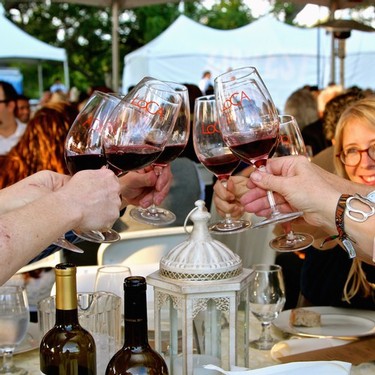
Toast to Lodi wine country at ZinFest Vintners Grille
In her latest Overview of the U.S. Wine Industry, released this past January 31, 2018, Master of Wine/Sonoma State University Professor Liz Thach remarks: Many of the statistics for 2017 U.S. wine sales are in and the results show steady growth, but with increasing competition from imports and other beverages. The outlook is still positive because it is expected that 2018 will continue to see steady growth pattern of previous years, at around a 2% increase in U.S. wine sales value.
What do the latest statistics mean for consumers of Lodi wine, as well as for growers and producers in the Lodi wine region? Lodi, after all, crushes about 20% of California’s entire wine grape crop (currently averaging over 4 million tons) each year. The Lodi AVA is by far the most widely planted wine region in the U.S. There are more acres of wine grapes planted in Lodi than all of Napa Valley and Sonoma County combined; in fact, more than the entire states of Washington and Oregon together, plus another 30%.
First, we should identify the “American consumer.” When most Americans think of California wine, they still think of Napa Valley (we’re sure many wine consumers think Napa Valley is California), where the average price of Cabernet Sauvignon is closer to $75 a bottle. Heck, the average bottles of Zinfandel and Chardonnay from Napa Valley are over $40.
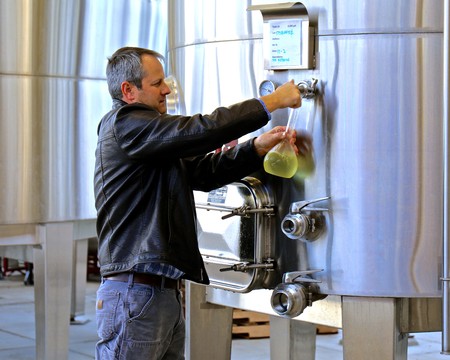
Oak Farm Vineyards winemaker Chad Joseph drawing freshly fermented Sauvignon Blanc; over the past two years, one of their fastest growing wines in terms of sales and popularity
But real American consumers don’t drink those wines. They just hear or talk about them; which, of course, is important, too, since that’s how American wine is perceived. But in Thach’s report – which represents an artful cobbling of reports recently put out by industry pundits like The Nielsen Company, Wines & Vines, Wine Business Monthly, Gomberg, Fredrickson & Associates, The Wine Institute of California, and other sources – she reminds us that
• The average retail bottle sale in the U.S. is about $10;
• What might be more telling is that sales of bottles in the $15-$19.99 range have increased over the past year by “double digits,” and
• Sales of $8-and-under bottles have decreased.
That is to say, Americans are slowly but surely trading up. Nonetheless, Thach reminds us, $8-and-under bottles of wine (not including boxed wines) still make up 55% of all wines sold in the U.S. It may be a while before the average American attains an actual Napa Valley taste.
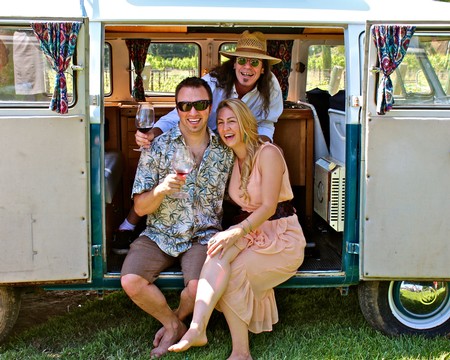
Good times in Lodi wine country
This means Lodi growers are still in the driver’s seat insofar as supply of grapes that the healthy majority of Americans consume. To give you an idea of how a wine region like Lodi stacks up: In the most recently finalized USDA Grape Crush Report – which was for the 2016 vintage – the following were the average prices per base ton for Cabernet Sauvignon in the three regions most widely planted to this grape:
Napa Valley (District 4) - $6,846
Sonoma County (District 3) - $2,959
Lodi (District 11) - $684
Industry analysts will tell you that the price of a bottle of wine reflects roughly 1% (give or take, depending upon myriad factors) of how much is paid for grapes per ton. That is why, selling for $684/ton, the average price of a Lodi grown Cabernet Sauvignon ends up being around $7 to $10; whereas for a Sonoma County Cabernet Sauvignon it’s somewhere in the neighborhood of $30 to $45, and for a Napa Valley Cabernet Sauvignon it’s $70 or more. Ergo: Lodi is far more capable of producing Cabernet Sauvignon that the majority of consumers are likely to drink.
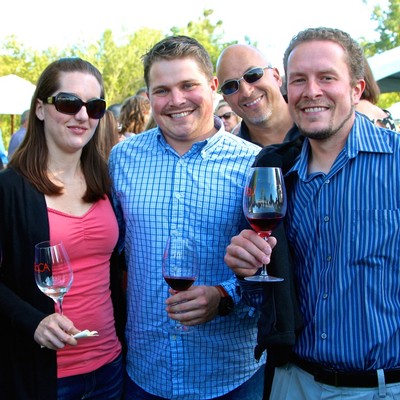
Younger-gen Lodi winemakers
Remarks on other bits of statistical data shared by Thach in her January 2018 report:
2017 sales of imported wines in the U.S. increased more (by 5%) than domestic wines (2%) - The upshot being, Americans are consuming more wine (overall sales increased by 3%), but it isn’t necessarily American wine. Clearly, they are quite willing to explore the wide range of imports coming from countries like France (for instance, in the increasingly popular rosé category, France leads all countries with 51% of the sales, compared to 37% produced in the U.S.) and New Zealand (one of the three fastest growing countries in terms of U.S. sales; particularly with their Sauvignon blanc, which according to Thach is one of the three fastest growing wine categories along with rosé and sparkling wines). In any case, according to Lodi Winegrape Commission Program Director Stuart Spencer, “Growth in consumer interest in imports also reflects a market acceptance of lesser known grape varieties; which gives a region like Lodi, known for its great diversity of grapes (see our previous post on the 100 grapes of Lodi), an additional advantage in the American wine market.”
78% of wines sold in the U.S. are in retail stores, and 20% in restaurants (which is up by 1.9%) – If anything, this is indicative of the fact that, at this point within the usual economic swings, Americans are spending a little more on discretionary things like wines ordered off wine lists, with meals prepared by trained chefs. Thach points out that the average price of a bottle in a restaurant is $40 (a healthy sum compared to the recent past); although she also cites the concern within the hospitality industry “that too many new restaurants and bars have been established, with the current number of on-premise establishments around 373,000.” The current restaurant bubble (much of it fueled by corporate venture capitalists) may very well burst; but as to whether this affects the steady trend towards on-premise wine consumption, that remains to be seen. The other 2% of U.S. wine sales, incidentally, is in “DTC” (Winery Direct to Consumer), which saw an increase of 15.5% from 2016 to 2017.
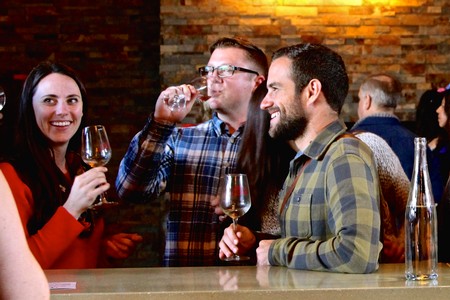
Lodi wine lovers at the Oak Farm Vineyards tasting bar
Women continue to consume more wine than men (by 59% to 41%) – Which is why a savvy winery would be wise to focus packaging, marketing and wine types and crafting on women, or what appeals most to women. To some degree, this is also directly reflected in the five most popular wine categories cited by Thach, which she lists in order of 2017 dollar sales:
Chardonnay ($2,539 million)
Cabernet Sauvignon ($2,423 million)
Red blends ($1,731 million)
Pinot grigio ($1,254 million)
Pinot noir ($1,046 million)
... Although Thach also makes note of the fact that Chardonnay sales went down by .9% in 2017. This could mean that Cabernet Sauvignon may surpass Chardonnay in sales at some point over the next few years; but it also means that the increases in lieu of Chardonnay’s fading appeal will be in the categories where we are currently seeing significant growth, such as in rosé, sparkling wine, Sauvignon blanc, and red wine blends (categories in which artisanal wineries in Lodi are particularly well positioned to explore because of the diverse range of grape varieties already in the ground, or capable of being expanded by dint of a uniquely mild, adaptable Mediterranean climate - the reason why Lodi is so widely planted in the first place).
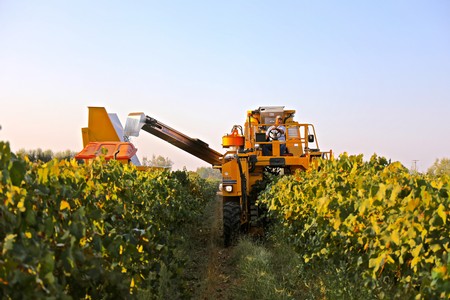
Teroldego harvest in Peltier Winery's estate vineyard on Lodi's east side
Red blends are still on the roll – For three consecutive years, red wine blends have been posting significant gains; going from under 11% of the market share in 2011 to over 13% today. Ironically, if you go back 40 years you would have heard market analysts talking about the premiumization of American wine tastes strictly in terms of “varietals.” Red wine blends, such as the generic E. & J. Gallo Hearty Burgundy, were considered the wave of the past. More and more of today's consumers are looking for choices beyond varietals. Do you know what two grapes Lodi growers are busily planting the most of to meet the increasing market demand for red wine blends? Petite Sirah and Teroldego. Petite Sirah has long been considered the ideal multi-purpose blending grape (vintners like Michael David Winery’s Kevin Phillips have been quoted to say, “If I could blend Petite Sirah into Chardonnay, I would”). While most consumers may not heard of Teroldego (native of Northern Italy), it has been described by local winemakers as an even more “perfect” black skinned grape for blending because of its deep color, excellent tannin/acid structure, and ability to enhance other grapes without adding an obstrusive note.
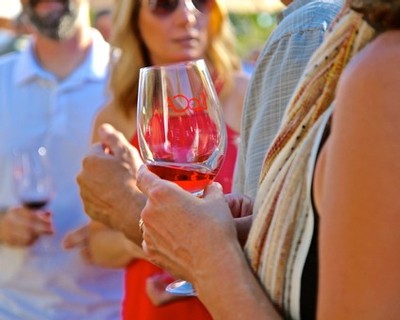
Glass of bone dry rosè; a style of wine increasing in popularity every year over the past five years
The top selling wine brands in the U.S. remain the same – Indicative of the fact that the average American wine consumer still appreciates a value priced wine above all, the top five producers of any wine type sold in the U.S., along with the names of their multi-brand parent companies:
1. Franzia (The Wine Group)
2. Barefoot (E. & J. Gallo Winery)
3. Robert Mondavi (Constellation Brands)
4. Sutter Home (Trinchero Family Estates, Inc.)
5. Carlo Rossi (E. & J. Gallo Winery)
The aforementioned brands and companies, needless to say, take the lion’s share of wine grapes grown in the Lodi Viticultural Area. Yet in the same way that Napa Valley represents “California wine” to most consumers, it is Lodi’s smaller, premium quality focused producers – like the widely distributed Mettler Family, Klinker Brick and LangeTwins Family brands, the artisanal McCay Cellars and Fields Family Wines, the relentlessly expanding Michael David Winery, the teeny-tiny Acquiesce Winery, the estately Oak Farm Vineyards, or super-cutting-edge Markus Wine Co. – that are actually molding the emerging image of the region, particularly by brandishing the "Lodi" appellation on their labels (something the giant producers generally don't, even with 100% Lodi grown bottlings).
Lodi may still grow the wines “of the people.” But it is also a region with which the increasing number of Americans honing a more discerning taste for fine wine can now easily identify.
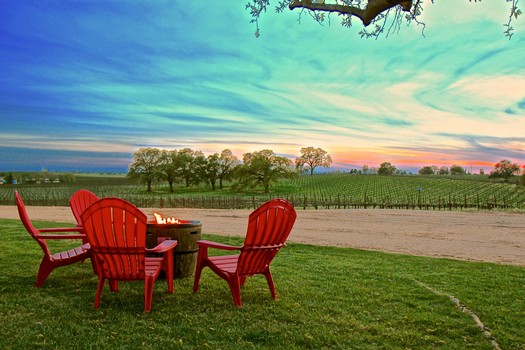
Clements Hills-Lodi sunset in Bokisch Ranches' Terra Alta Vineyard